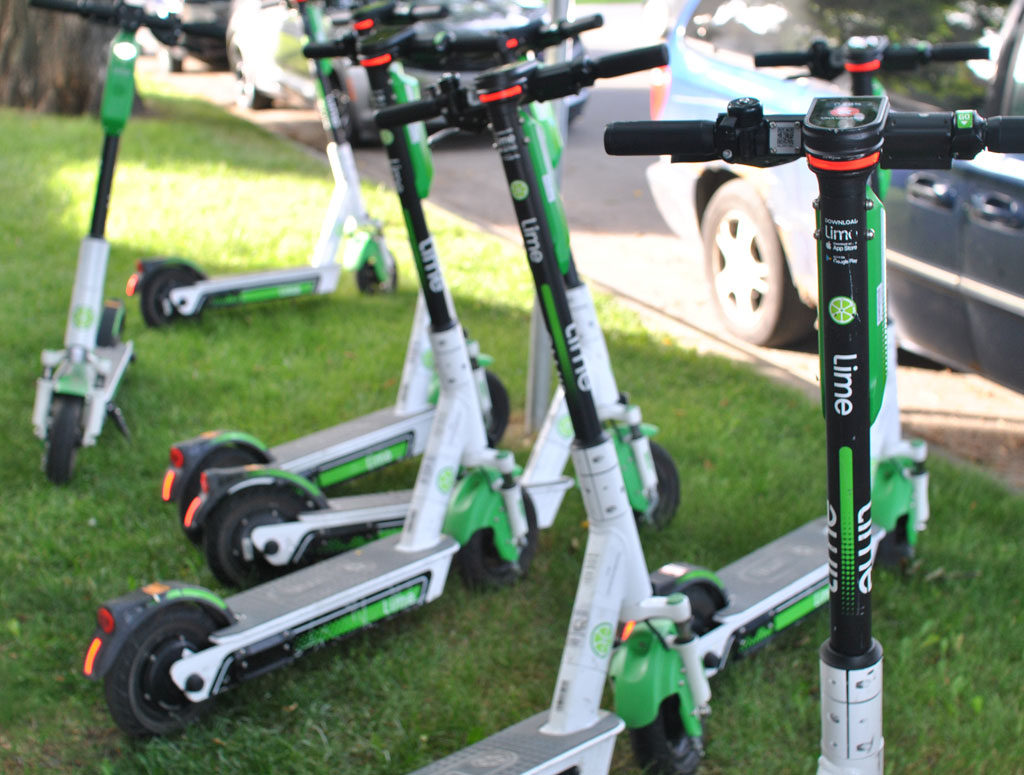For electric scooters or e-scooters, fans, there’s a lot to love. Among other things, they are now available to share in many American cities. They also serve as quick, cheap alternatives to traditional transportation. Running late for a meeting across town? Why hail a cab or bother with mass transit? Just use an e-scooter. Do you need another way to get around while your car is in the shop? An e-scooter may be a good option.
Of course, it may not necessarily be the safest option. A recent study concluded that U.S. accidents involving electric scooters nearly doubled between 2017 and 2018. A 2019 Consumer Reports investigation also identified an alarming number of injuries and deaths since the introduction of e-scooters here.
To add insult to injury, experts say, the fine print in the user/rental agreements often makes it difficult – if not impossible – to sue the e-scooter company if you are hurt.
How does e-scooter sharing work?
Although it has not been available for all that long, it is safe to say that by now e-scooter sharing is no longer a novelty in the United States. In fact, several companies have developed applications or apps that facilitate the service.
In general, you have to download an app and create a user account. Then you can access a map to locate available e-scooters. Once you find one, you follow a set of instructions to unlock, use and ride it. There is also a set of instructions for you to follow once you have finished your ride. Specifically, you will be directed where to park, how to notify the company that you have ended the ride, and find out how much the ride costs.
The cost of these e-scooter rentals typically includes a $1 flat fee, plus 15 cents per minute. Their reported range is 15 to 37 miles, and their top speed is approximately 15 mph.
Common scooter injuries and causes
A study published earlier this year revealed that healthcare providers in U.S. emergency rooms treated more than 39,000 scooter injuries between 2014 and 2018. Most of the injured sought treatment for some sort of head trauma. The most common complaints were broken bones, scrapes, cuts and bruises. Serious injuries and fatalities have reportedly occurred in some cases.
Experts have attributed scooter injuries to:
- Loss of control of the e-scooter, resulting in collisions with fixed objects
- E-scooter malfunctions, such as brake failures or stuck throttles Experts also concede that other factors may have contributed to the scooter accidents that caused the spike in injuries. These include alcohol use and lack of helmet use. However, experts stress there is no way to say so for sure.
In this context it is also important to note that hospitals cannot necessarily differentiate e-scooter accidents from other types of scooter accidents.
What happens if you get hurt?
As we have already noted, some legal experts say the language in e-scooter rental agreements, or terms of use provisions, make it difficult for injured riders to sue.
Bird’s rental agreement and waiver of liability and release
A quick look at Bird’s Rental Agreement, Waiver of Liability and Release, effective as of July 6, 2020, seems to back that assertion. Among other things, the agreement stipulates:
- That riders are responsible for making sure the e-scooters are safe to ride before using them.
- That users agree not to use the e-scooters if there are any “noticeable” safety issues.
- That users agree to abide by applicable helmet laws.
- That by riding an e-scooter, a rider “assumes all responsibilities and risks for any injuries or medical conditions (emphasis added).”
- That each rider “represents and certifies that he/she is familiar with the operation of the Vehicle, is reasonably competent and physically fit to ride the Vehicle, and has reviewed the safety materials provided by Operator via the App and/or other materials (Emphasis added).”
- That the rider must use his or her discretion to determine “whether conditions, including, without limitation, rain, fog, snow, hail, ice, heat or electrical storms, make it dangerous to operate a Vehicle (Emphasis added).”
The list of rules goes on and on…. But this is not unique to Bird. Lime’s User Agreement includes similar provisions.
Lime’s user agreement
Without going into too much detail, it specifically states that its products are mechanical devices and that there is “inherent risk” associated with their use, including the risk of malfunctions.
More importantly, the Agreement states:
“These risks are not always obvious, and they may cause property damage, injury or even death to you or others. By using our services, you agree that you understand these risks, that it is your responsibility to use our services safely, and that the entire risk arising out of your use of the services is yours and yours alone. You are responsible for any harm you cause to other people or property (Emphasis added).”
To use a Lime e-scooter, you must also agree to “waive any and all claims including those in contract, tort (including negligence) statutory and/or any other grounds, even if any of the released parties have been advised of the possibility of such claims (Emphasis added).”
In other words, you basically relinquish your right to sue when you sign the agreement. But that’s exactly why you need an experienced personal injury lawyer on your side.
At the Law Office of Parag L. Amin P.C., we have the skills, knowledge and determination needed to help you get the compensation you deserve. If you were injured on an e-scooter, contact us to learn more about your legal options, today.


